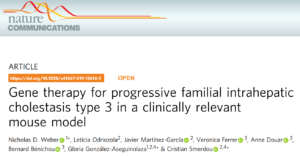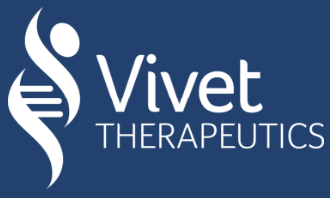Progressive Familial Intrahepatic Cholestasis

CAUSE AND SYMPTOMS :
The main clinical manifestations are cholestasis, pruritus (itching), jaundice, failure to thrive and hepatomegaly (enlarged liver). Three types of PFIC have been characterized at the molecular level.
PFIC1 :
is associated with mutations in the ATP8B1 gene, which encodes the FIC1 transporter (aminophospholipid flippase). Affected individuals typically develop liver failure before adulthood.
PFIC2 :
is associated with mutations in the ABCB11 gene, which encodes the bile salt export pump (BSEP) transporter that allows the excretion of bile acids from hepatocytes into the bile. The PFIC2 transporter defect is restricted to the liver and tends to be more severe than in PFIC1. Cellular bile accumulation leads to hepatocyte death, bile release in blood, severe pruritus, evolution to cirrhosis, portal hypertension, liver failure and ultimately death within the first few years of life in nontransplanted patients. PFIC2 patients are also at increased risk of developing hepatocellular carcinoma.
PFIC3 :
is associated with mutations in the ABCB4 gene, which encodes the MDR3 phospholipid transporter, resulting in impaired biliary phospholipid secretion. In PFIC3 patients, detergent effects of hydrophobic bile salts in bile canaliculi are not countered by biliary phospholipids. Similar to PFIC2, the functional defect is restricted to the liver. PFIC3 usually does not become apparent until late infancy or early childhood, more rarely people are diagnosed in late childhood. Evolution to liver failure is more insidious than for PFIC2 and may occur in childhood or adulthood.
INHERITANCE :
All 3 PFIC types are inherited in an autosomal recessive manner, which means that each patient has received one copy of the mutated gene from each parent.

Prevalence
Taken together all PFIC subtypes affect 1 in every 50,000 to 100,000 births1

Cholestasis
PFIC accounts for 10 to 15% cases of neonatal cholestasis syndromes1,2

Liver Transplantation
PFIC accounts for 10 to 15% of children requiring liver transplantation1,2
1. Davit-Spraul et al. Orphanet Journal of Rare Diseases 2009
2. Sira et al. Hepatic Surgery 2013
Diagnosis :
The diagnosis of PFIC is confirmed by genotyping after suspecting the disease from clinical and laboratory findings.Current treatment options :
Symptomatic treatment may help managing symptoms, especially pruritus, but ultimately most patients will need liver transplantation before adulthood.– Medical management of severe pruritus involves antipruritic drugs (eg rifampicin), and anticholestatic drugs, mostly ursodeoxycholic acid (UDCA)
– Surgical biliary diversion for PFIC2 patients only: the interruption of enterohepatic bile circulation that decreases intestinal reuptake is often beneficial in PFIC2 before the onset of hepatic fibrosis development
– Liver transplant is curative ; PFIC2 patients are usually transplanted in their early childhood, while PFIC3 patients are usually transplanted after 10 years of age
– Improvement of nutritional status, through vitamin deficiency correction
Unmet medical needs :
Unmet medical needs in PFIC remain very high :
- Medical treatment (UDCA) improves pruritus in only 1/3 of the patients, with partial or complete response
- Surgical biliary diversion may improve PFIC2 patients until transplantation, but is associated with its own complications (complex procedure, complications of stoma, dehydration and severe hyponatremia, patients may still develop liver cancer)
- Liver transplantation is efficient in 75-100% of the patients, but is limited by :
- the risks of surgery and long-term immunosuppression
- timely organ availability
- the generation of anti-BSEP transporter antibodies in some PFIC2 patients, which may lead to disease recurrence
- costs related to the procedure and long-term management
LINK TO EDUCATIONAL WEBINARS
Potential benefits of AAV gene therapy, as a novel approach to manage PFIC2 and PFIC3 :
Successful correction by gene therapy of the defective BSEP and MDR3 transporter functions for PFIC2 and PFIC3, respectively, would ultimately bring a cure to the patients.
Such an approach carries the potential to overcome the main limitations of current standard of care for PFIC2 and PFIC3. It would provide long-lasting benefits, by restoring physiological bile secretion and preventing severe hepatic complications of the disease and outweighing its related significant costs.
Publication:


